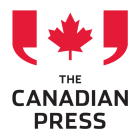How the Bank of Canada sets rates
To understand why interest rates are falling and how that could have a profound affect on your bank account, you need to first understand the role the Bank of Canada plays in setting rates.
The Bank of Canada is the country’s central bank and is responsible for setting what is known as the country’s benchmark or policy interest rate (sometimes also called the target overnight rate). Since the pandemic began, the Bank of Canada has been making headlines for its continual sharp cuts in the benchmark rate, which now sits at .25%. The rate has not been that low since the financial crisis of 2009.
A country’s central bank lowers interest rates when the economy is slowing (as it has been doing since the coronavirus started spreading). The theory is that lower interest rates encourage businesses to borrow money to expand and thus create jobs. Lower rates also encourage consumers to borrow and spend more freely, which in turn energizes the economy. In a press release discussing the drop to .25% for the overnight rate, the Bank of Canada stated that “The unscheduled rate decision brings the policy rate to its effective lower bound and is intended to provide support to the Canadian financial system and the economy during the COVID-19 pandemic.”
How banks set rates
Canada’s banks take their cue from the Bank of Canada. When the Bank of Canada lowers its benchmark rate, banks are generally expected to follow suit and decrease their prime rates.
The prime rate, also called the prime lending rate, is the annual interest rate that major financial institutions use as their baseline when establishing interest rates for things like lines of credit, loans and variable mortgages. The final interest rate that customers are ultimately charged is the baseline prime rate plus a set percentage (for example, a line of credit might have an interest rate of prime plus 3%).
How interest rates affect borrowers
You don’t need to be a financial expert to see how lower interest rates mean good news for borrowers. When the Bank of Canada lowered its rate, the big banks soon followed and presently the prime rate in Canada is 2.45%—down from 3.45% in early March.
If you’re looking for a mortgage or already have a variable rate mortgage, you can reap the rewards of a lower, more manageable rate that will make homeownership more accessible. Unfortunately, if you have an existing fixed-rate mortgage, you won’t be able to easily take advantage of low interest rates. You may, however, want to contact your bank or mortgage broker to find out what your penalties would be to break your mortgage and lock in a new one with a lower rate.
Of course, lower interest rates affect mortgages, but also much more. Clearly, as interest rates decrease, borrowing of any kind gets easier. So, if you were thinking of getting a loan or a line of credit, this may be the ideal time to borrow.
How interest rates affect savers
Unfortunately for Canadians who were taking advantage of a high interest savings account to passively grow their savings, the dropping prime rate is not necessarily good news. I keep some money in several different high interest savings accounts with various banks and I have been noticing a significant slump in my savings as most financial institutions cut their HISA interest rates. Some institutions have even cut their rates three or four times—some by as much as a 50 percent decrease—over the course of the last three months since the pandemic started.
Before COVID-19, numerous non-traditional, online banks were offering HISA rates of 2% and above. Now, you’ll be lucky to find a rate above 1.5% from a majority of those same financial institutions.
Why a HISA is still a smart move
Despite these recent and significant interest rate cuts, high-interest savings accounts are still a smart place to safely store your money. You just need to take a look at the stock market shake-up over the last few months to see why it’s essential to have some easily accessible cash securely available and growing at a reliable—if slower than hoped for—rate.
Despite the cuts in interest rates, savings accounts (especially innovative hybrid savings accounts) offer Canadians much better interest rates and flexibility than old-school chequing accounts from most traditional banks.
How savers can take advantage of fluctuating interest rates
Hands-on method
One way to combat plummeting saving account interest rates is to take a hands-on approach to managing your money by moving it around between banks to take advantage of the best HISA interest rates. This is a method I personally have started to use for a portion of my savings. You just have to be diligent about monitoring interest rates and feel comfortable transferring money electronically (which is usually easy to do and free with most online-only banks).
If you decide to adopt this method, it’s important to note the difference between a promotional interest rate and a standard interest rate. A standard rate is the bank’s normal set rate with no specific expiry date. A promotional interest rate is only valid for a limited time and when it expires the rate can significantly decline. Moving money around to enjoy a promotional rate can still be worth it if the rate is generous and the promotion goes on for a few months.
While it’s always wise to shop around for the best high interest savings accounts, I’ve found that overall, the newer, non-traditional, digital only banks tend to have the best standard rates.
Hands-off method
If you like a more hands-off, laissez-faire approach to growing your savings, stick with a bank that offers consistently great HISA rates. The financial institution I’ve come to rely on for top standard savings account interest rates and no fees is EQ Bank.
Since the pandemic began, EQ Bank is one of just a handful of financial institutions in Canada that has made only one (as compared to three or more) cut to their interest rate offering. Their Personal Account has a set generous interest rate of 2.50%*—one of the most outstanding non-promotional rates in Canada—which goes up to 4% when you set up direct deposit. I like that I can stick a chunk of my savings in my Personal Account and forget about it knowing that it’s growing as much as possible in Canada’s current low-interest banking climate. Because EQ Bank also features no everyday fees and free transactions, I can also rest easy knowing I can move my money around easily if needed.
Apply for Steady Savings with EQ Bank's Personal Account
- Interest is calculated daily on the total closing balance and paid monthly. Rates are per annum and subject to change without notice.
Final word
Whether you’re a borrower or a saver, interest rates can have a profound affect on your budget. There’s no way to really predict with any certainty when the Bank of Canada will start to raise rates, but if you’re trying to save, then a high interest savings account still remains one of your strongest and safest money-growing options. And if you’re borrowing, we’re quite sure you can hold off on interest rates climbing back up, as you’re reaping a bunch of benefits with mortgages, loans, lines of credit and more.






